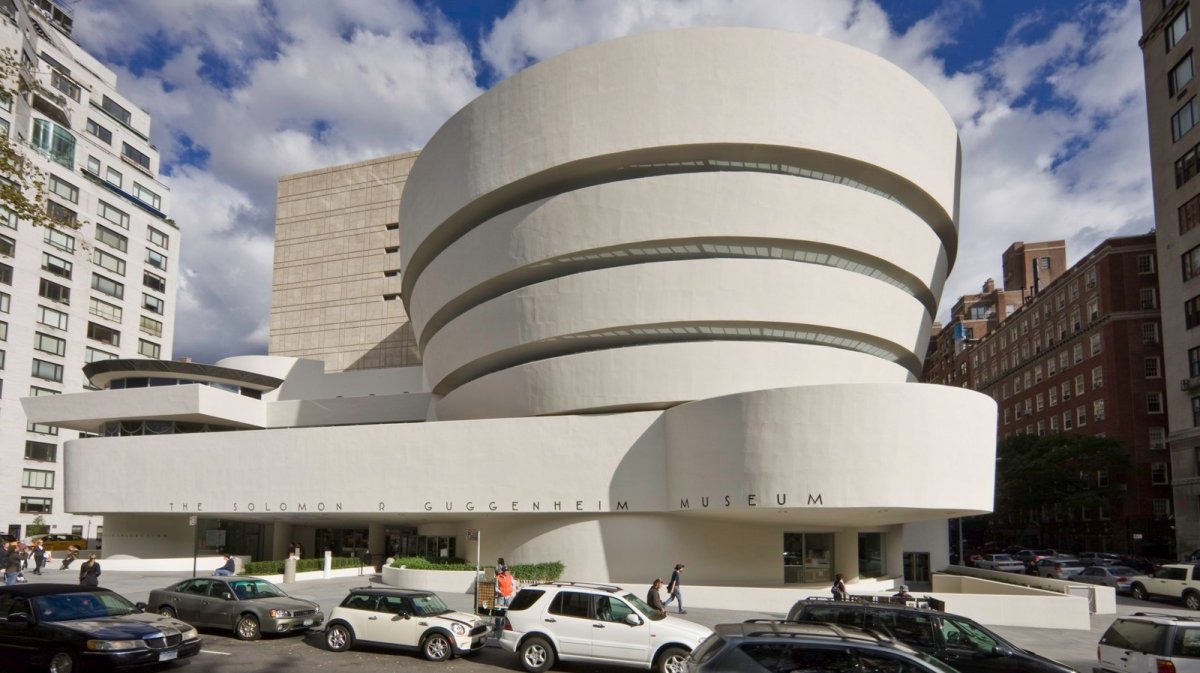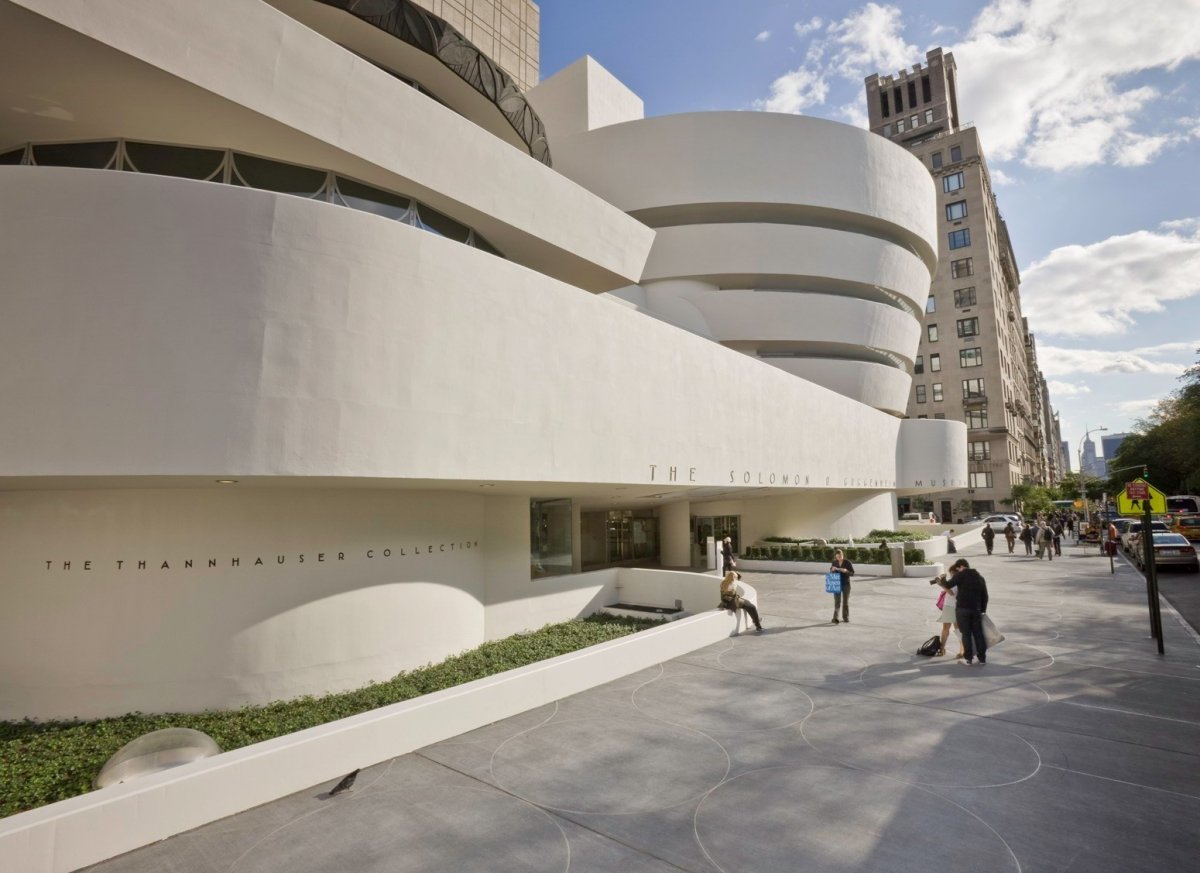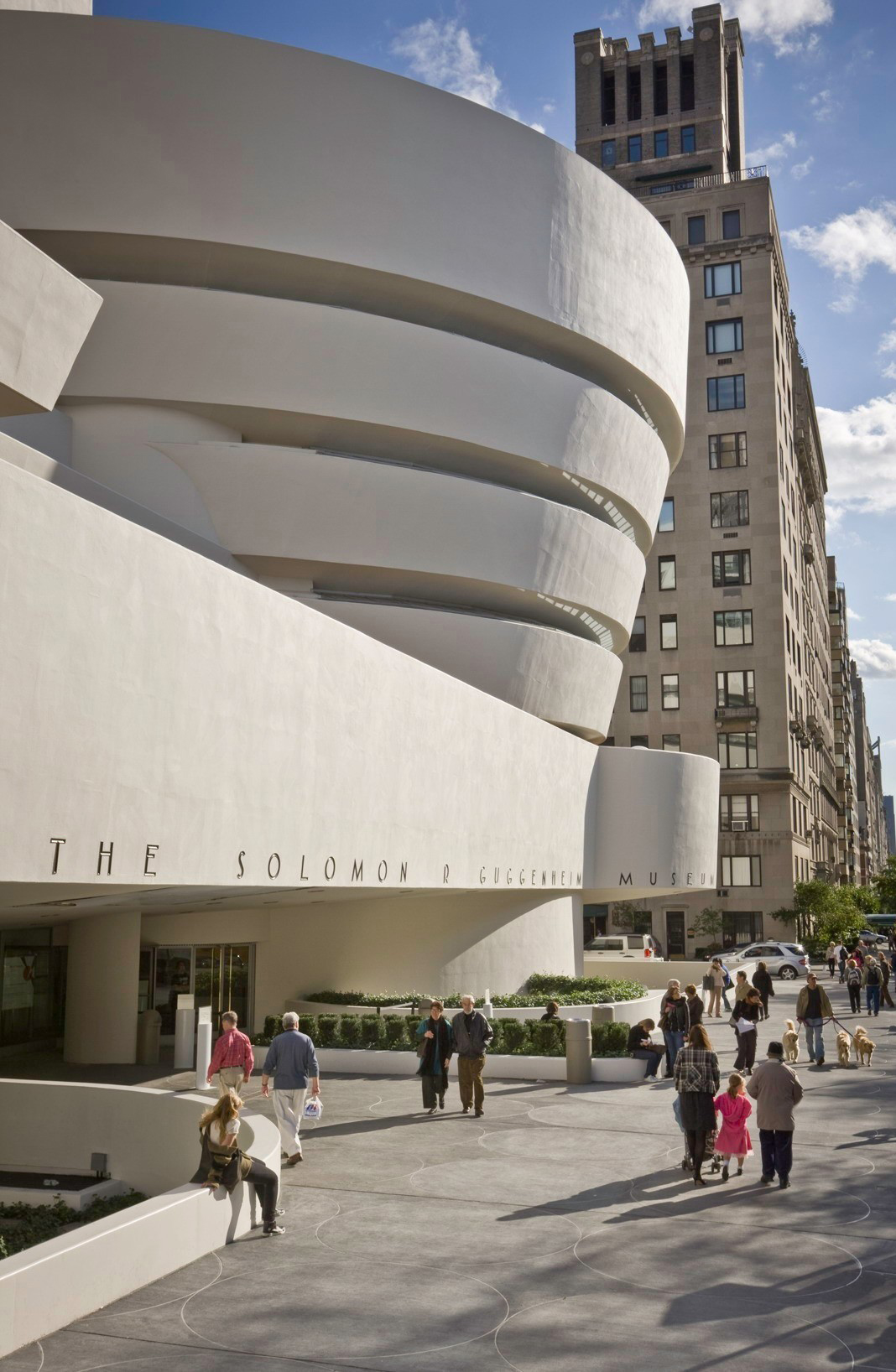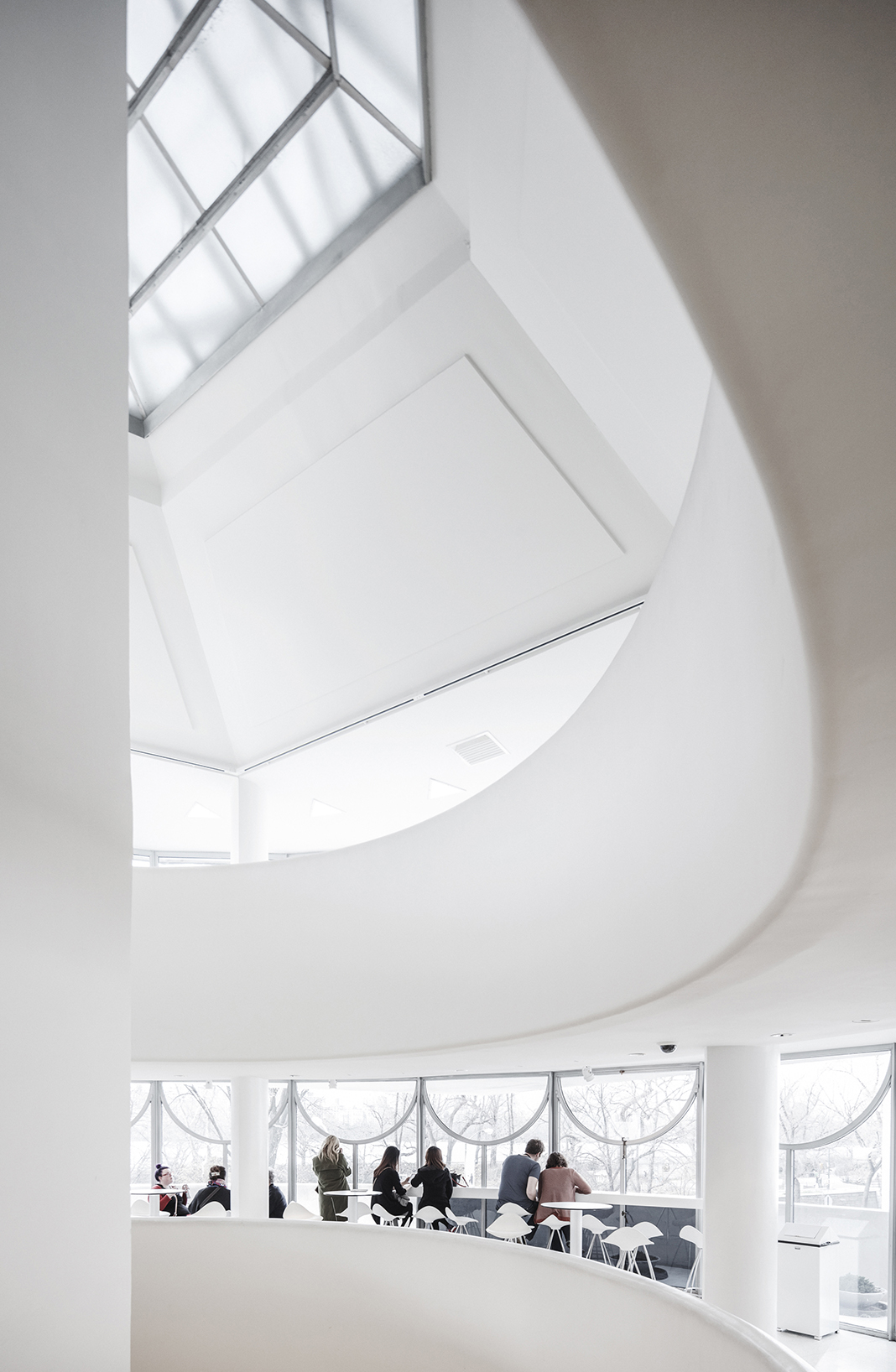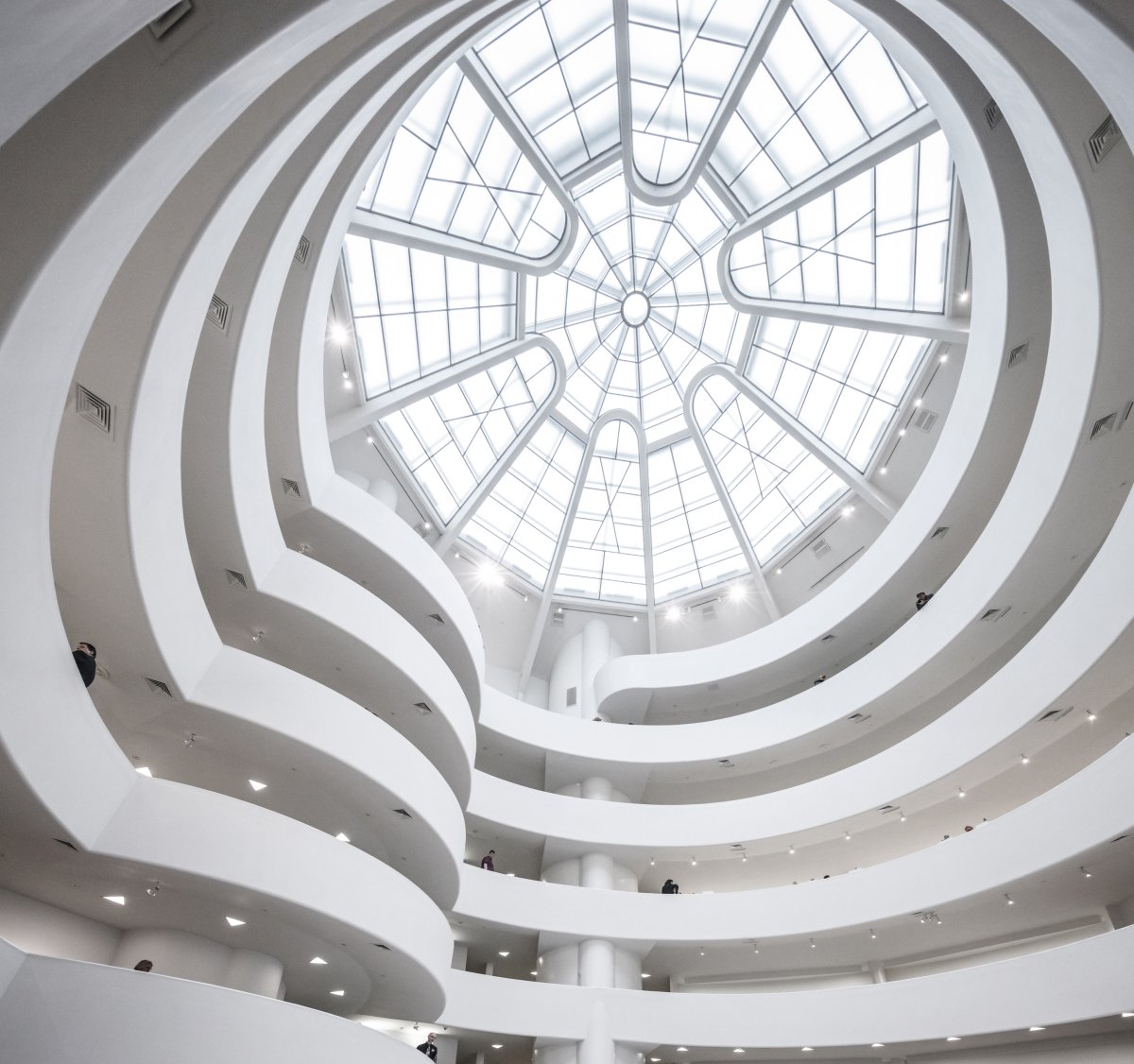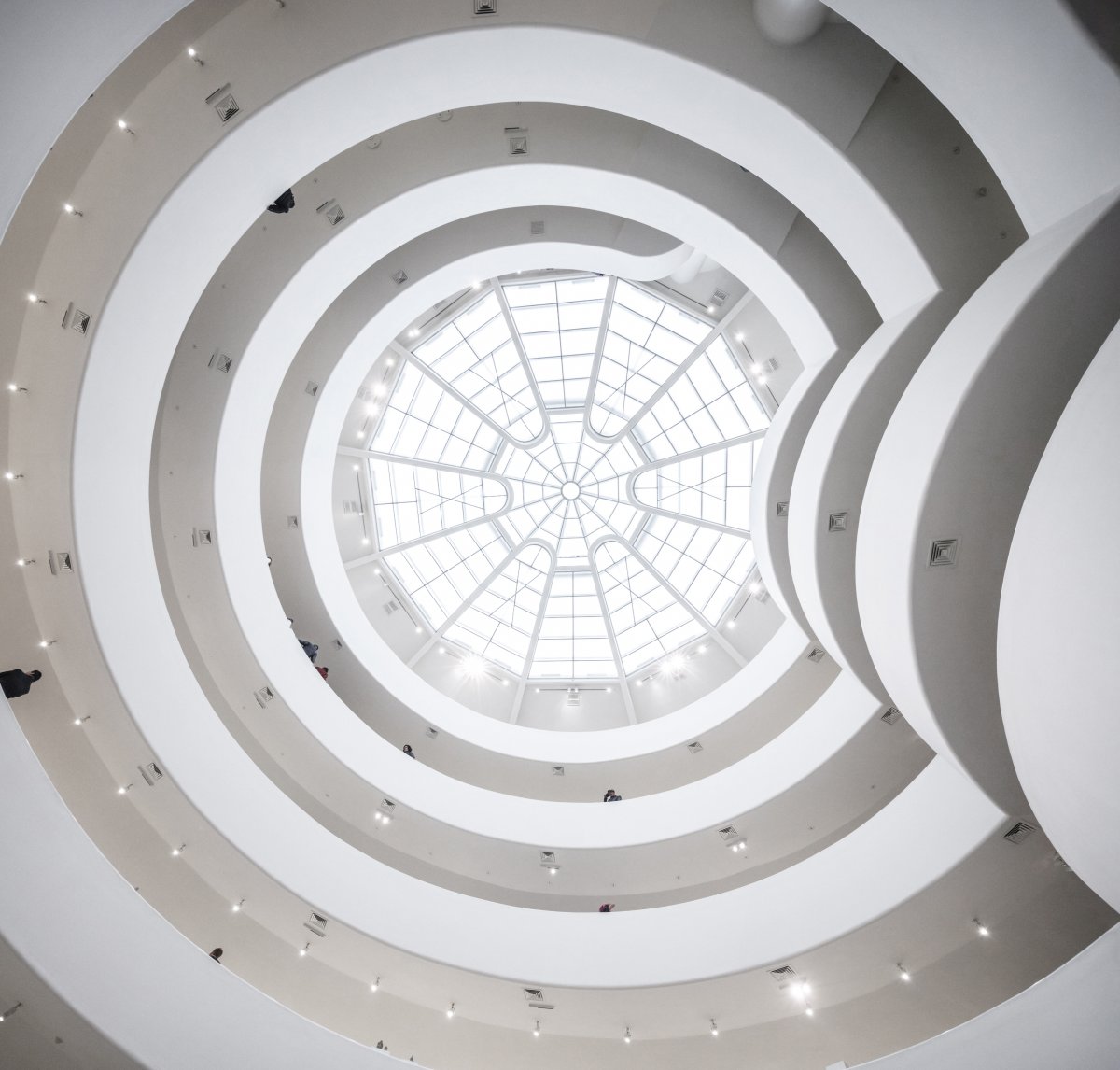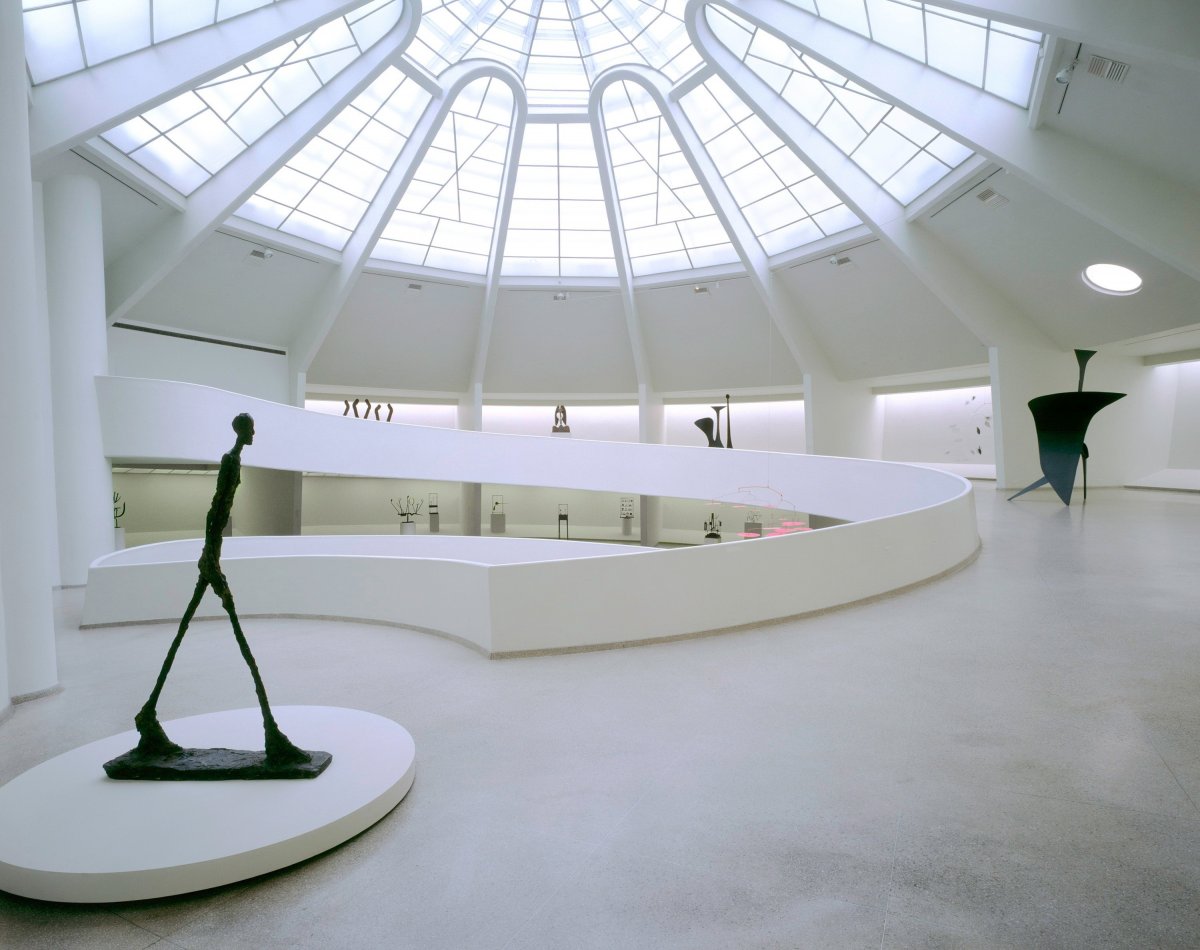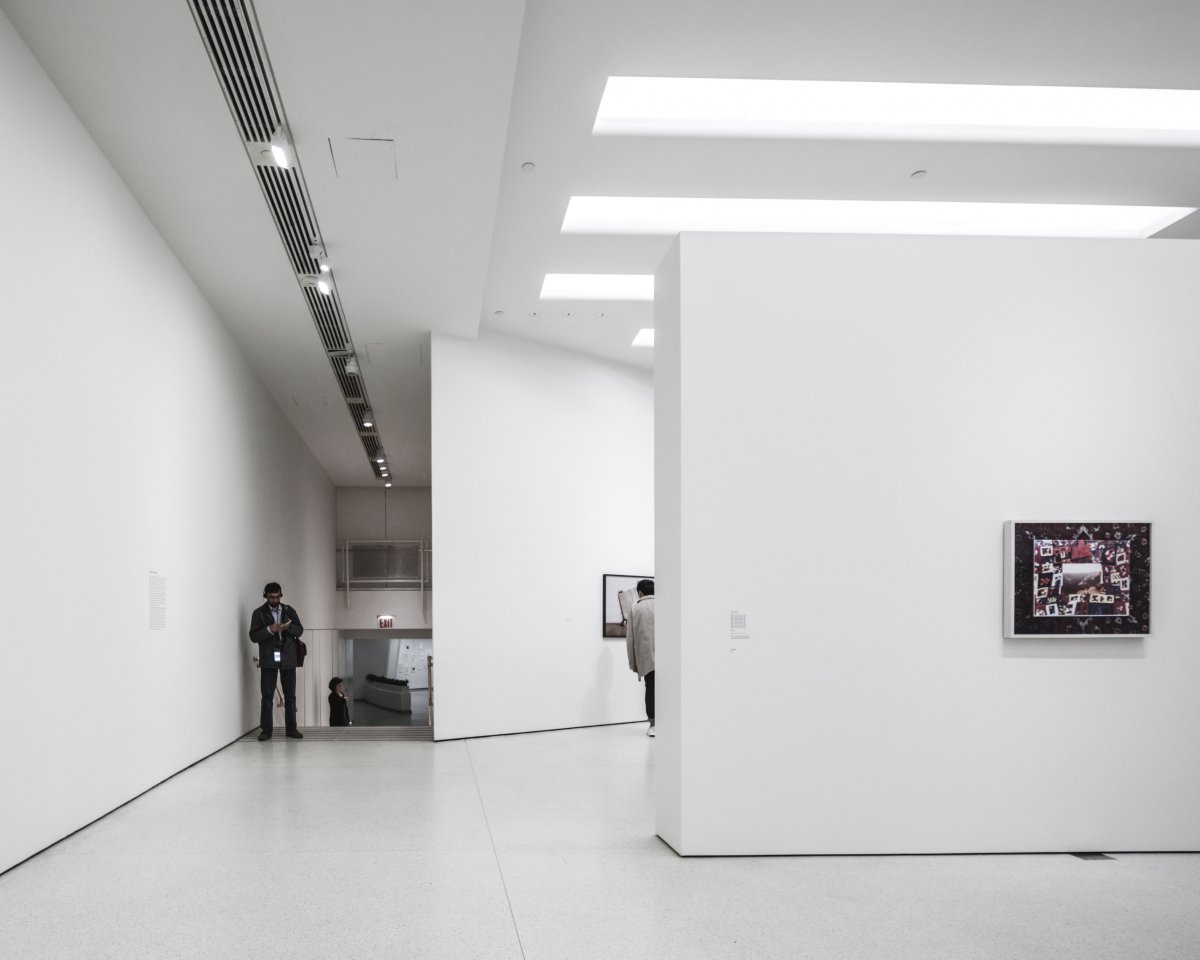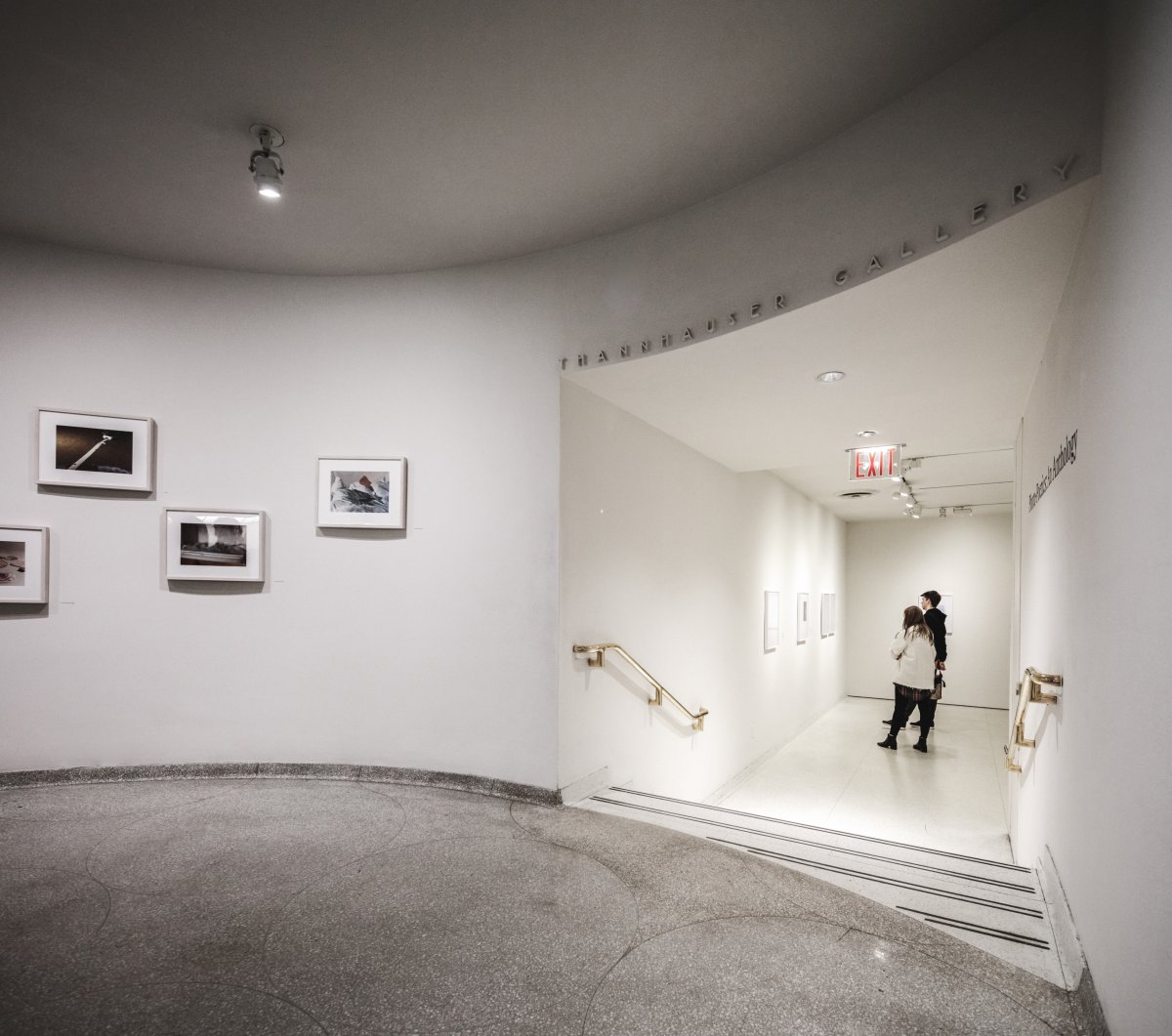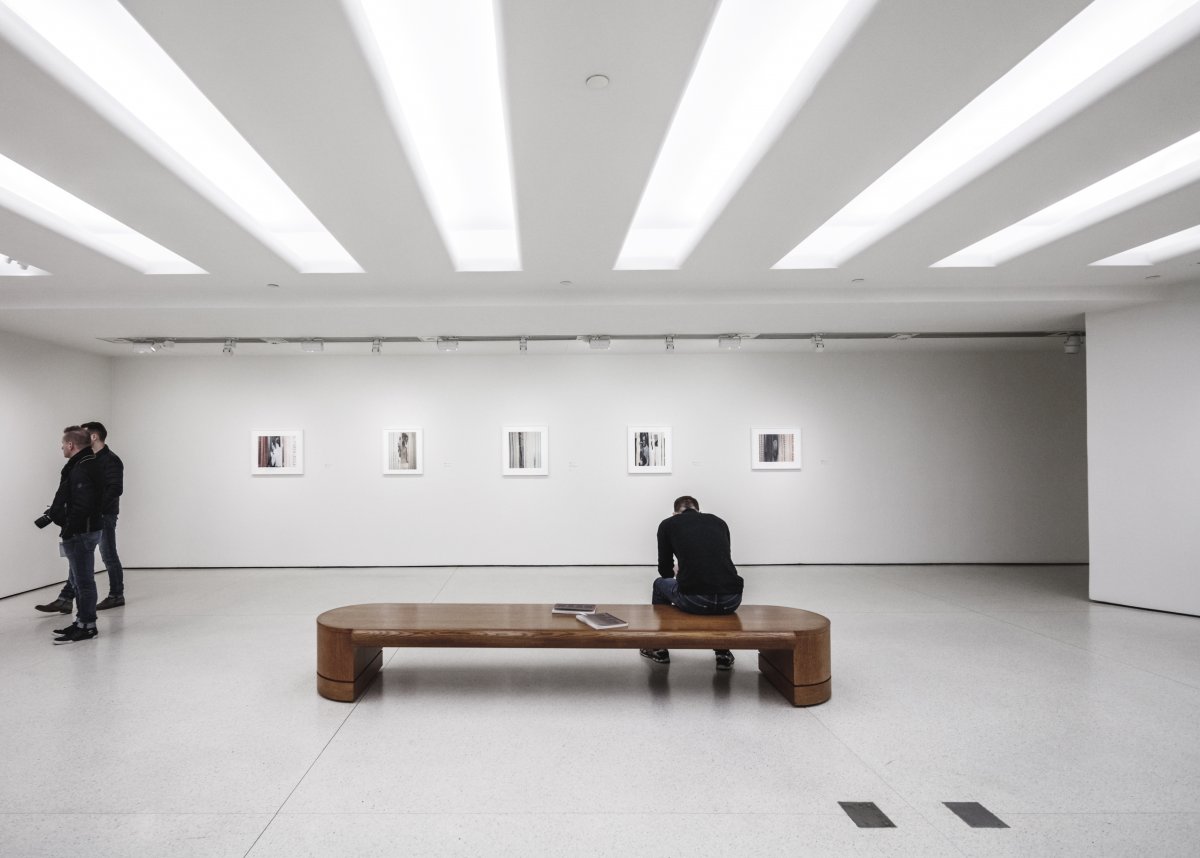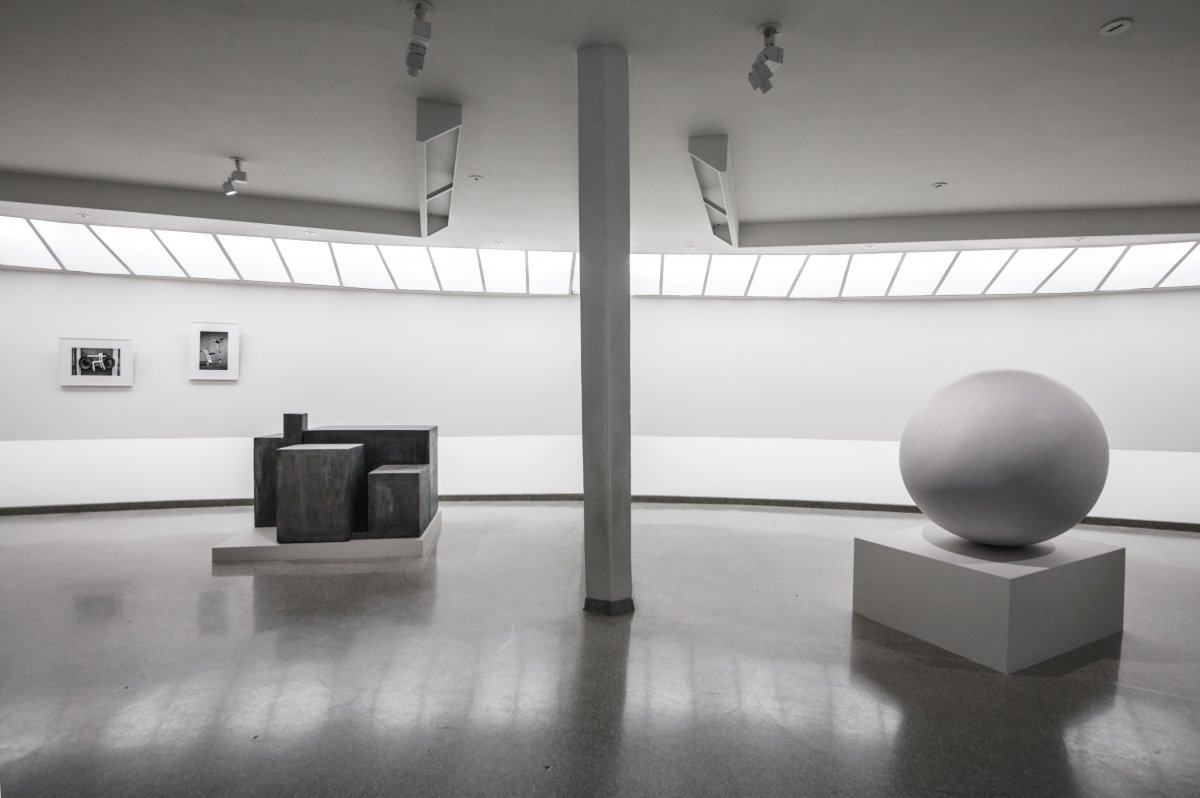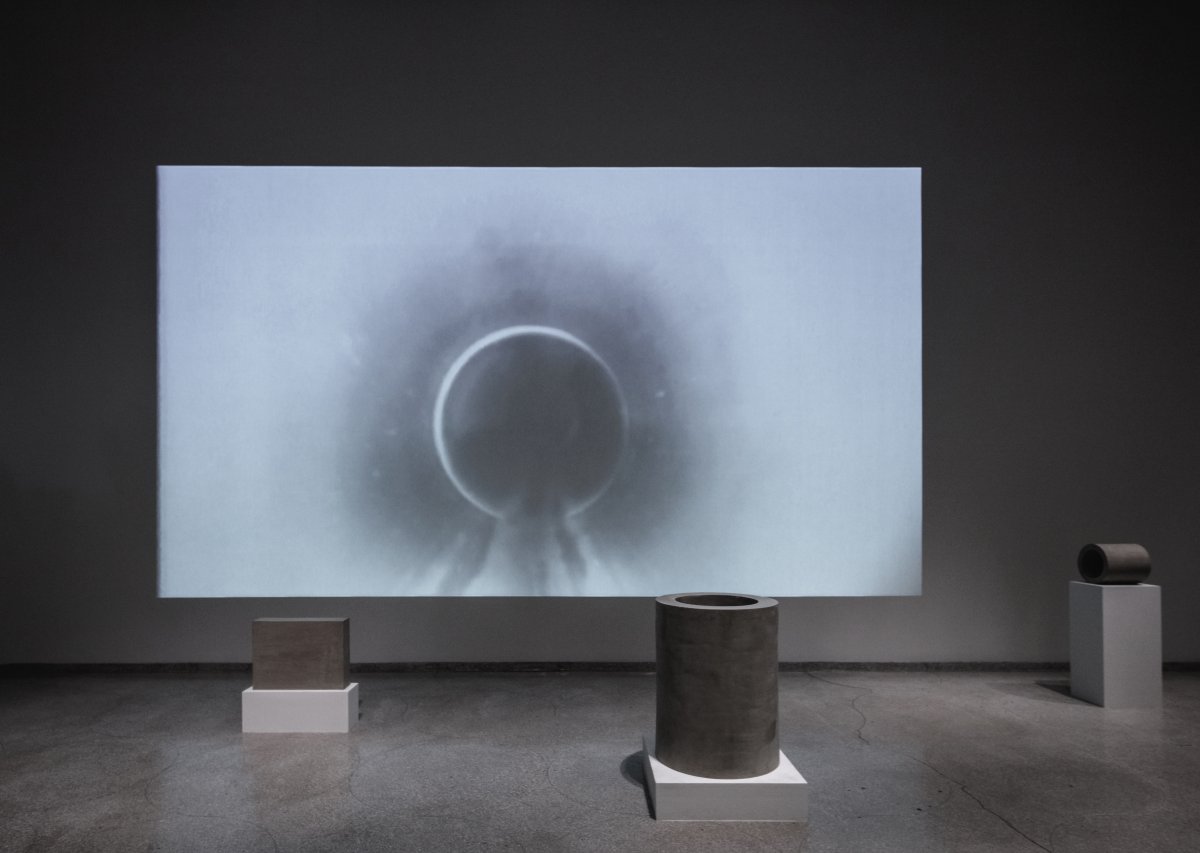
1956 Solomon R. Guggenheim Museum
Museum director Hilla von Rebay searched for a "spiritual sanctuary" to house the Solomon R. Guggenheim museum's growing collection of modern art. "I need a fighter, a space enthusiast, a creator, a tester and a sage -- I'm reading three of your books right now and it gives me the feeling that no one else can do it," she wrote to Frank Lloyd Wright in 1943. Wright, who never received a major commission in New York, vowed that his work would "make this building and this painting a continuous and wonderful symphony, unprecedented in the art world.
Few buildings have generated as much controversy as the Guggenheim. In stark contrast to the surrounding Manhattan rectangles, Wright's museum is like a white ribbon, coiled into a cylindrical stack that widens and spirals up to the glass ceiling. Wright boldly declared that his museum would make the nearby Metropolitan Museum of Art "look like a Protestant barn," and that his organic building, "purebloods," ditched traditional museum designs.
An intense movie-like spiral ramp slowly rises from the ground to the skylight at the top. Wright's designs have been denounced by contemporary critics as "washing machines", "imitation beehives" and "giant flush toilets", and even by avant-garde artists who claim that such buildings compete with art. In the end, Guggenheim freed museum architecture from its conservative shackles. Wright's museums played an active role in shaping the experience of art appreciation and set a powerful precedent that modern museums are deeply grateful to today.
- Architect: Frank Lloyd Wright(1867-1959)
- Words: Qianqian

